Salmoriglio is a very old sauce from Southern Italy that's delicious with grilled fish, chicken and pork. It's basically a light marinade or vinaigrette, typically including garlic, warm water, oregano, lemon juice and extra virgin olive oil.
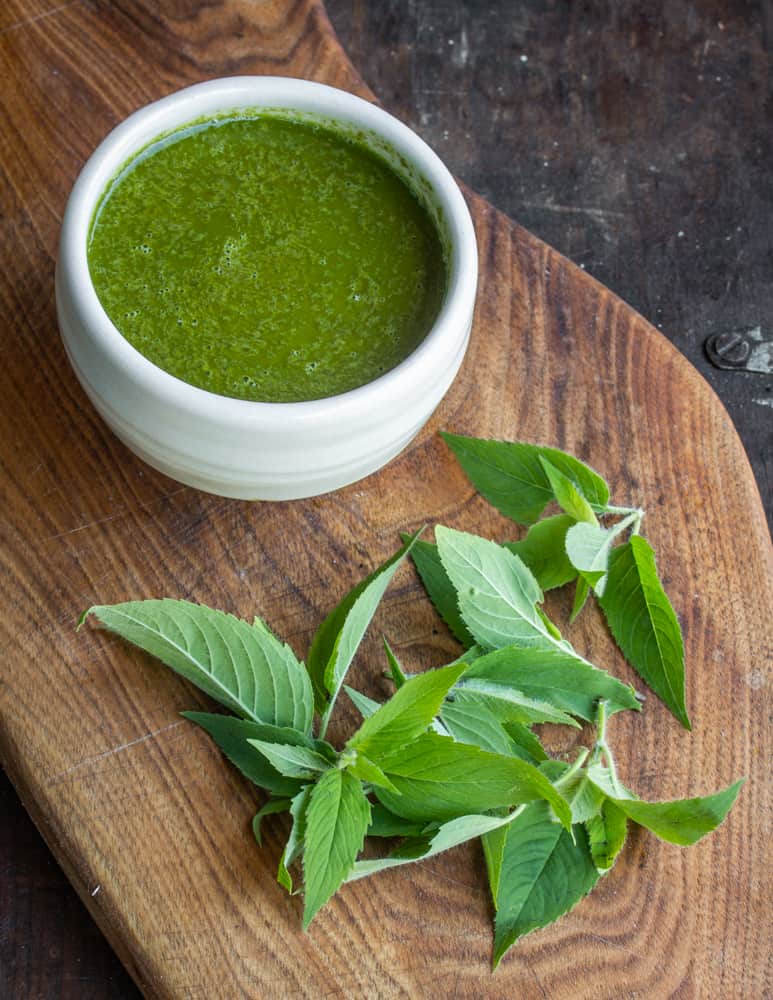
Story goes that in Sicily, Trapanese cooks would take oregano and lemon juice, mix it with sea water, and use it as a condiment. It's easy to make a modern version at home-no sea water needed.
Origin
Pronounced "sal-more-eel-ee-yo", the word is derived from Sicilian salmurigghiu. In Calabria it's known as Salamarigghiu.
The root phrase comes from the word for brine, which is salamoia in Italian. In Spanish it's salmuera. So, essentially, salmoriglio means brine.
The similarities between languages are probably due to the fact that Spain and Greece ruled Calabria and Sicily at different points in time-both places where the sauce is traditionally made.
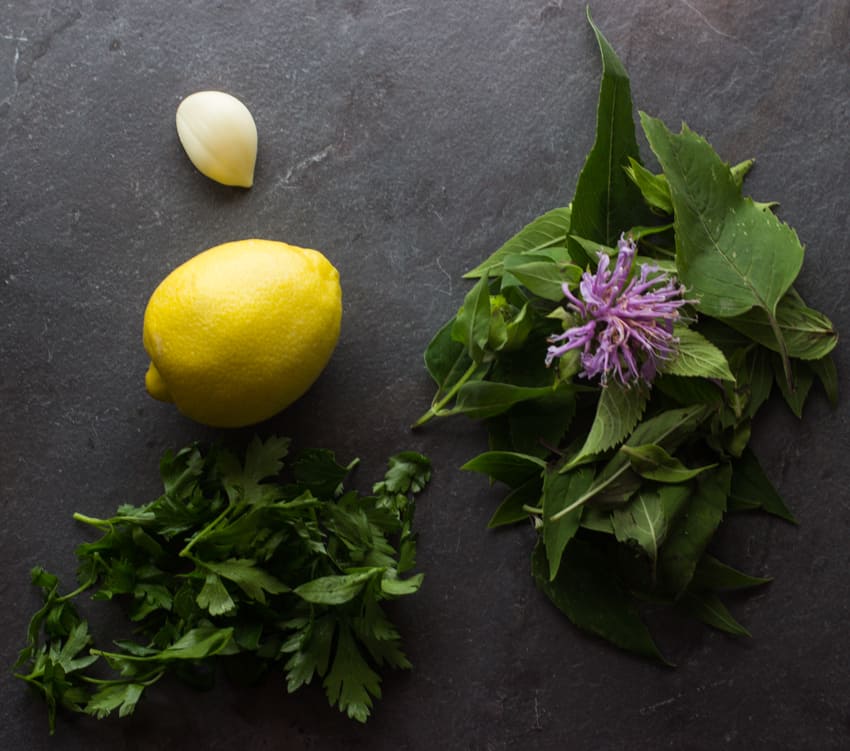
Regional Variations
Depending on where you are, the sauce could be called different things. Greeks have a similar sauce called Lemonolado. In Sicily, some recipes replace the lemon juice with white wine.
Other recipes might include fresh tomatoes. The first version I was shown included long strands of lemon and orange zest. I make the sauce with wild oregano (Monarda fistulosa) and it's one of my favorite bee balm recipes.
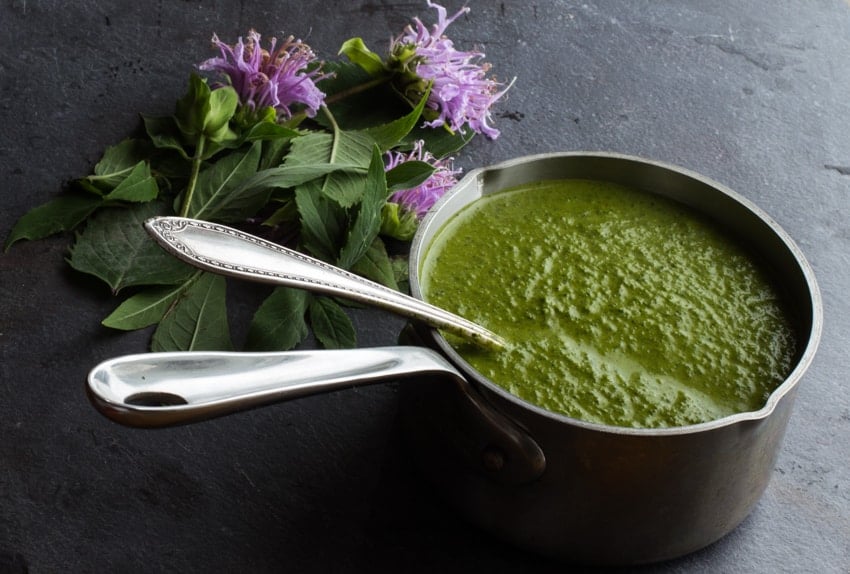
Some variations of the recipe make an oily, broken sauce, like the one I was first shown. There are other recipes I found that use a method that emulsifies the sauce with water and oil, creating a more creamy mouth feel. I prefer the latter.
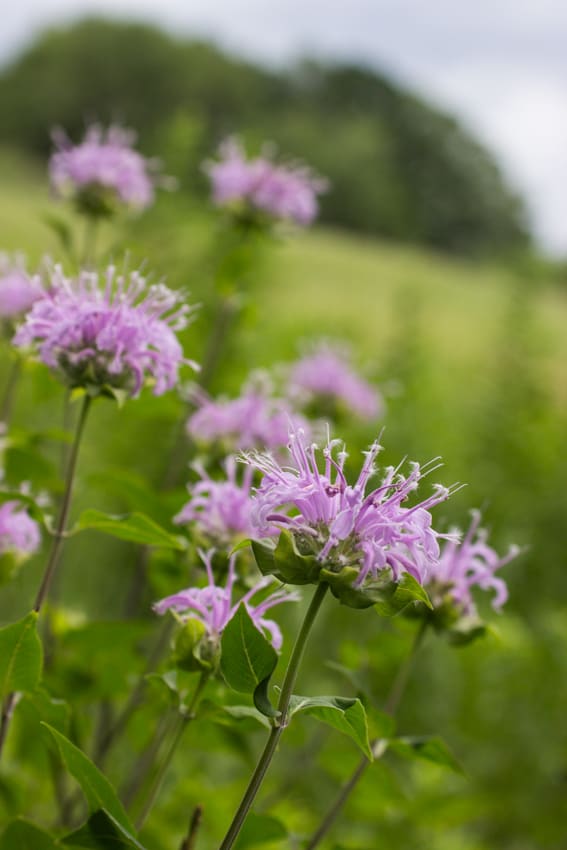
A Sauce, Dressing or Marinade
Depending on what you want to do, the sauce can be both. If you want to use it as a marinade, you'll want to pat the meat dry before cooking, especially if you'll be grilling.
The sauce tastes strongly of oregano, with just enough lemon to make it sparkle. Here's a few ways I use it. It's a delicious, versatile condiment.
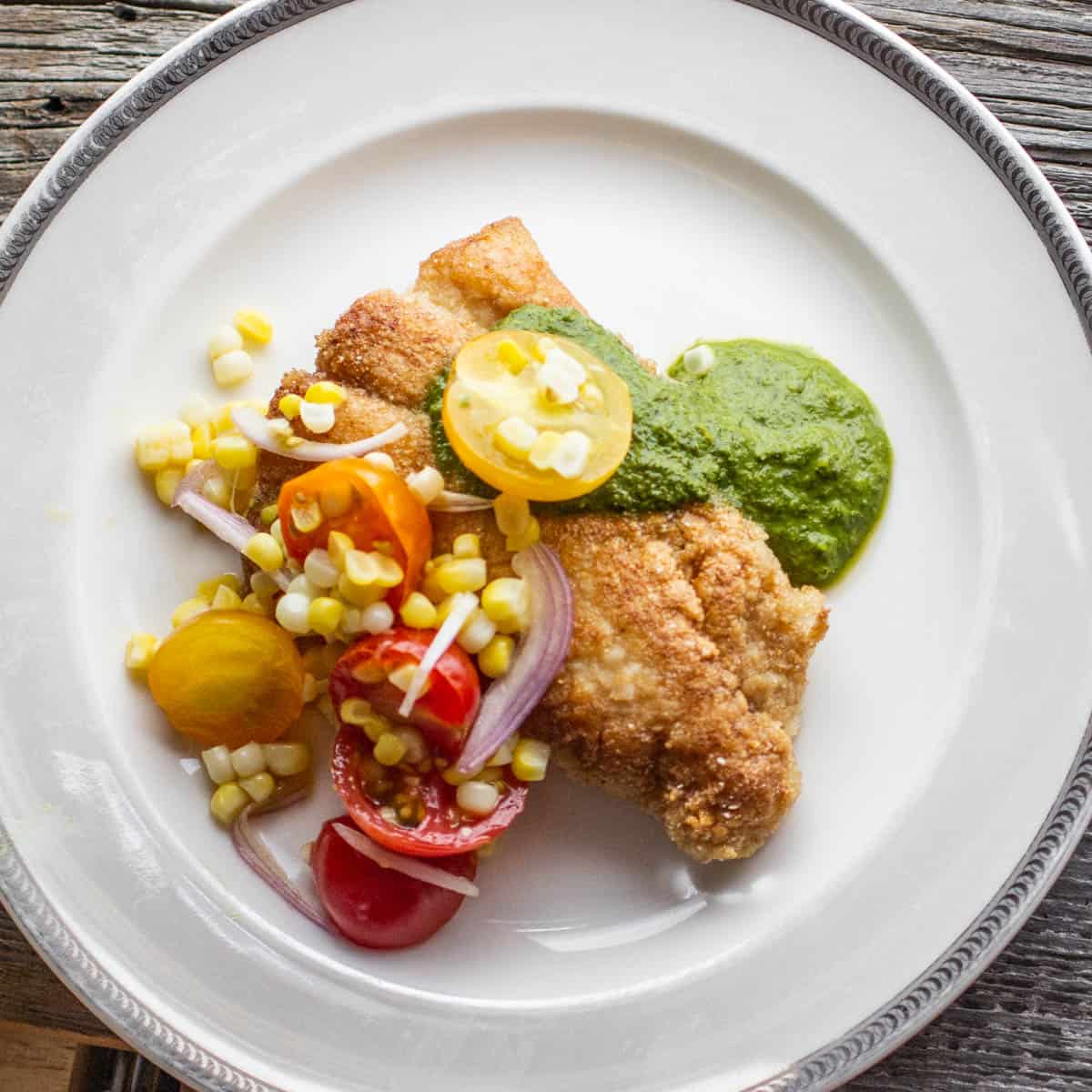
How to use
- Traditionally its served as a garnish for grilled fish. Swordfish salmoriglio is common.
- Chicken salmoriglio is great too.
- At my restaurants, I often tossed it with crispy roasted potatoes with a salmoriglio dressing.
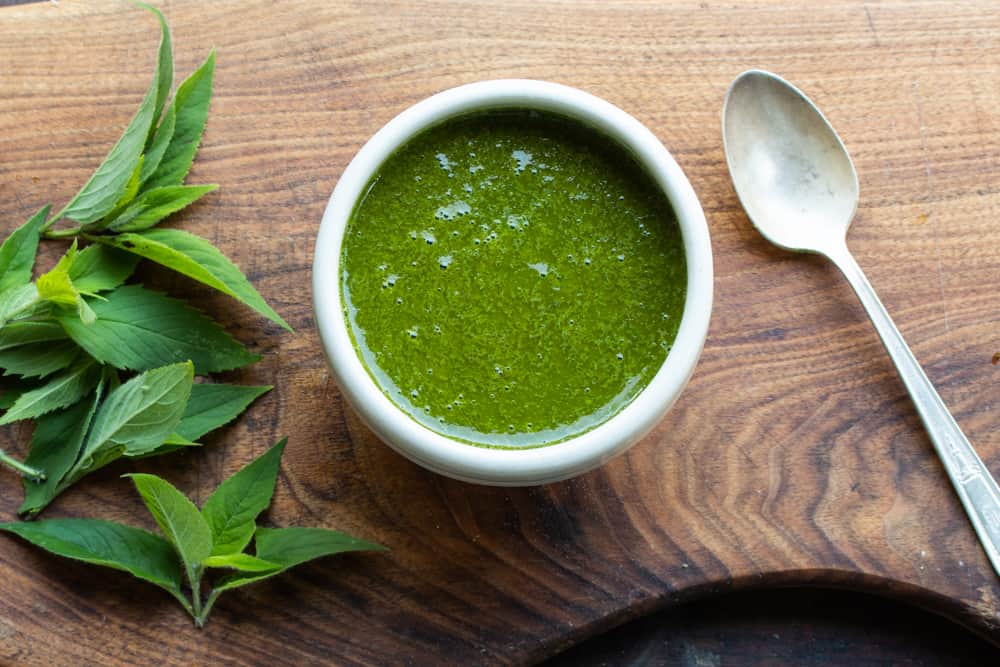
More
The Forager's Guide to Bee Balm (Monarda fistulosa)
Italian Salmoriglio Sauce with Bee Balm
Equipment
- 1 Blender or mixing bowls and a whisk
Ingredients
- 1 cup packed flat leaf parsley, leaves only
- 1 cup packed fresh oregano leaves, or bee balm leaves *see note
- 1 large clove of garlic
- ½ cup light olive oil *see note
- ½ cup extra virgin olive oil
- ¼ cup water
- 2 tablespoon fresh lemon juice
- Zest from one large lemon
- Kosher salt and pepper to taste
Instructions
Smooth Sauce
- Mix the two oils together. Bring a quart of salted water to a boil, add the parsley and cook for 5 seconds.
- Remove the parsley and refresh in cold water. Squeeze the parsley dry and reserve.
- Add the garlic, lemon juice, water, oregano and parsley to the blender. Begin pureeing the mixture, drizzling in the oils until the sauce is smooth and emulsified.
- Double check the seasoning for salt and pepper then transfer the finished sauce to a container, stir in the lemon zest and refrigerate.
Traditional salmoriglio sauce
- Traditionally the sauce is loose and not emulsified. To make it the traditional way, mince the garlic and herbs, put in a bowl with the water and lemon juice. Whisk in the oil, lemon juice and refrigerate until needed.
Video
Notes
Using
This is Excellent on fish, chicken, pork, delicate vegetables like roasted squash and potatoes, or as a compliment to dishes using summer produce, like tomatoes and corn, it would also be great mixed into mayonnaise.Light Olive Oil
I blend extra virgin and light olive oil here for a balanced flavor. You can substitute mild-tasting olive oil, or your favorite salad oil here instead. You can also use 100% extra virgin olive oil.Bee Balm
If you want to use bee balm leaves as I've done here, blanch them with the parsley to calm their flavor. Fresh oregano can be used as-is.Nutrition
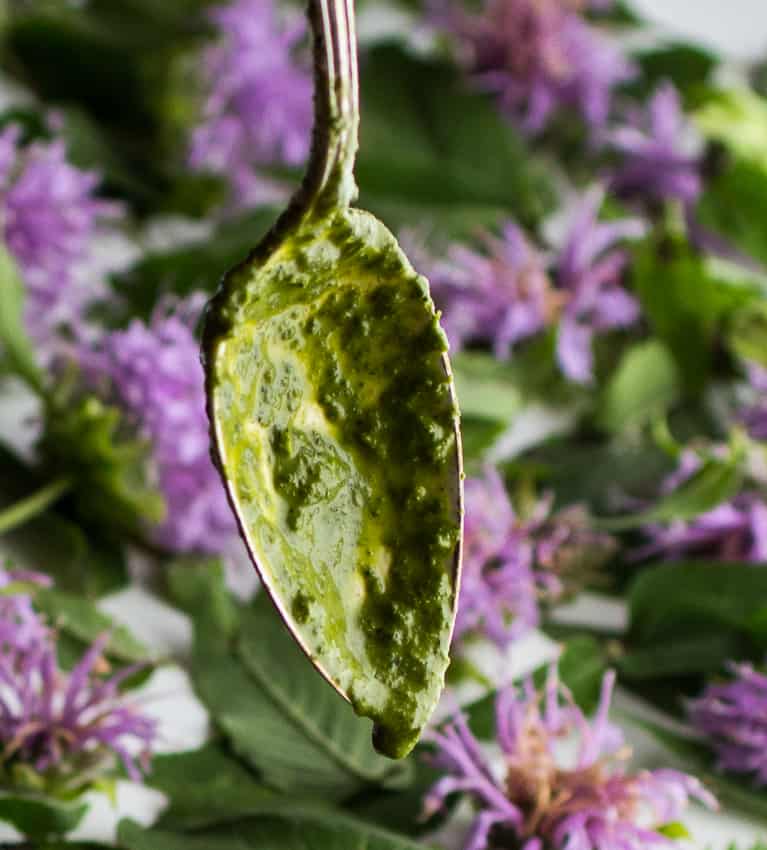

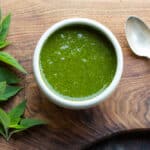
Pam
When I learned this sauce, I learned it as "amogia." My Aunts Betty and Virginia basted anything on the grill with the broken version of the sauce. Virginia said the best basting tool was a big handful of herbs picked right out of the garden. It's helpful to realize that bee balm fits right in with Basil, Oregano, Marjoram, Sage - all the tasty greenery of a joyful summer. I absolutely love your language and culture knowledge.
Alan Bergo
Interesting, that's a name I've never heard. Thanks for showing me something new.
Marlyn
What is meant by light oil?
Alan Bergo
An oil like light olive oil. If you use all extra virgin it will solidify when cold.
Jeannie
Keeping my fingers crossed that I'll be able to successfully grow Monarda fistulosa this year to use in place of oregano and feed the pollinators! Your salmoriglio sauce recipe is the first thing that I'll make with the harvest. Thanks for all the great foraging info and recipes! I appreciate you!